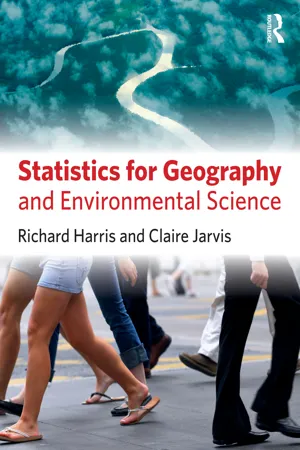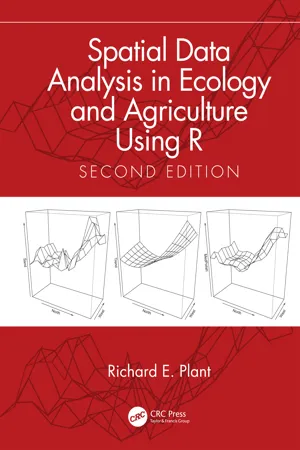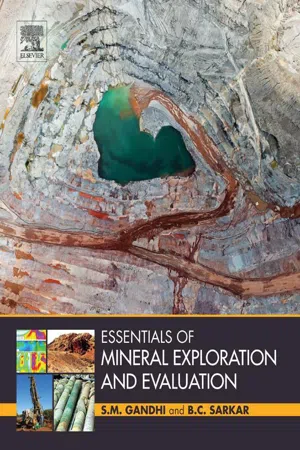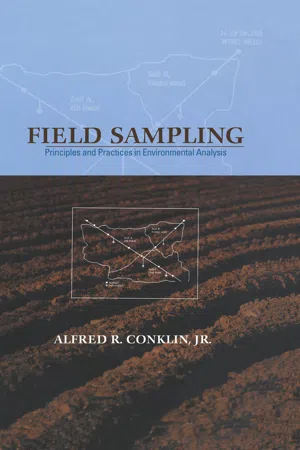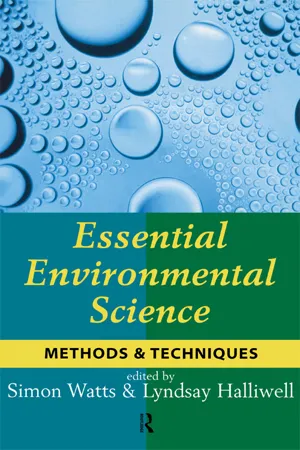Geography
Sample Collection
Sample collection refers to the process of gathering representative specimens of materials or substances from a specific geographical location for analysis and study. In geography, sample collection is crucial for understanding the physical and environmental characteristics of an area, such as soil composition, water quality, and vegetation distribution. It involves careful selection, proper handling, and documentation of samples to ensure accurate results.
Written by Perlego with AI-assistance
Related key terms
Related key terms
1 of 4
Related key terms
1 of 3
7 Key excerpts on "Sample Collection"
- eBook - ePub
- S. Mitra, Pradyot Patnaik, B.B. Kebbekus(Authors)
- 2018(Publication Date)
- CRC Press(Publisher)
2 Environmental SamplingWe might imagine a satellite which could scan the earth’s surface and provide a complete analysis of every part of the environment. This is, of course, in the realm of science fiction. Instead, we must collect representative samples of a small part of the environment in which we are interested, and analyze these to provide information about the composition of the area. For example, it is obviously impossible to analyze all the water in a lake, so portions of the water must be collected and analyzed to determine the true concentrations of materials in the lake. Similarly, to study contamination around a leaking underground gasoline tank, numerous soil samples are needed to map the extent of the pollution.We must keep in mind that only a small amount of sample (a few grams or milliliters) may be collected from a vast heterogeneous area. It is imperative that the samples collected represent the environment as accurately as possible. Major decisions are based on the results of the analyses. The steps involved in environmental sampling are:• Development of a sampling plan, including where and when samples will be collected and the number of samples required.• Collection of the samples.• Preservation of samples during transportation and storage.2.1The Sampling PlanThe importance of good sampling cannot be overstressed. The sample is the source of information about the environment. If it is not collected properly, if it does not represent the system we are trying to analyze, then all our careful laboratory work is useless. Care must be taken to avoid the introduction of bias or error.Sampling is done for monitoring purposes, as well as for research. Data may be collected to monitor air and water effluents or to characterize pollutant levels in environmental media (air, water, soil, biota). The objectives may be to comply with regulatory requirements, to identify long- and short-term trends, to detect accidental releases, or to develop a database or inventory of pollutant levels. Research may involve studying the fate and transport of pollutants or identifying pollutant exposures for humans and animals. It is important to design these studies scientifically so that they are cost effective and generate statistically significant information. - Richard Harris, Claire Jarvis(Authors)
- 2014(Publication Date)
- Routledge(Publisher)
Examples of sampling frames include the electoral roll for an area, the list of students matriculated at a university or school, or the complete police record of all shoplifting crime reported in a particular place or timespan. Sampling frames may also be geographical; consider the use of the electoral ward or enumeration district, a list of postcodes in an area or another form of regional boundary. In the case of physical geography, the sampling frame could be the list of operating meteorological stations or pollution control instruments in an area, a watershed relating to a river feature under investigation or a digital map showing geological or elevation classifications for the study area under review. Sample units should be defined by size (for example, quadrat extent in a bio-geographical study) and the location and time of records should also be noted.4.3 The process of sampling, phase 1: issues
Efficiency issues
Collecting, and analysing, data are both time-consuming processes. Whilst human nature appears to encourage a tendency to collect data ‘because they might be useful’, without careful planning it is quite easy to amount volumes of unusable data and miss out something that later turns out to be critical. Bearing in mind the issues raised in Section 4.2, consider your answers to the questions in the box below.Review scenarios and questions: Scope, scale and extent- If you are looking at biodiversity indicators, do you need to record the individual proportions of named species in your sample notebook? Might it be better to cover a wider geographical range, noting number of different species, instead?
- You are seeking data about shoplifting in the UK. Should you rely on secondary data concerning recorded shoplifting incidents, given that these are suggested to be but a small sample of the whole (Bromley and Thomas 1999), or should you weigh up other strategies to gather your data?
- You are interested in the impact of green lanes on butterfly distributions. Butterflies are in general most active at high levels of sunshine. Is it really worth undertaking a sampling campaign at both 9am and 12pm, or would one set of observations at 12pm be just as effective?
- You have been investigating the effects of heavy industry on the quality of river water. While you are there, you decide it might be interesting to look at levels of phosphorus and nitrogen also. After you have analysed the different chemicals, at considerable time and expense, you realise that you have no data concerning the history of agricultural land use in the area and cannot make good use of your nitrogen and phosphorus data. Further, because you have undertaken more analysis than planned, your project may run late and runs the risk of not being completed. Think back, what might you have done differently?
- Richard E. Plant(Author)
- 2018(Publication Date)
- CRC Press(Publisher)
5 Sampling and Data Collection 5.1 IntroductionSpatial data consist of two components, a spatial component and an attribute component (Haining, 2003). Spatial sampling can refer to the collection of information about either of these two components. An example of the sampling of the spatial component of a data set is the use of a GPS to record locations in a landscape of point features such as trees. An example of sampling of the attribute component is the collection of soil properties such as clay content, cation exchange capacity, and so forth, according to some sampling pattern. One could also sample for both the spatial location and the attribute values. All four of the data sets used in this book conform to the second type of sampling, in which the location of the sample is specified and some attribute value or values are recorded. It is implicitly assumed in this sort of sampling that the locations of the sites are measured without error. This assumption is not always valid in real data sets, but it is a fundamental one on which much of the theory is based. Since the true location is usually close to the measured location, the usual way to take location uncertainty into account is to augment attribute uncertainty.In the sampling plans described in this chapter, the locations at which one collects data are generated according to a rule. Sometimes the rule involves some form of randomization, although this is not the case with any of the four data sets in this book. Sometimes the rule involves the systematic selection of locations, as is the case with Data Set 4. Alternative methods of site selection, neither random nor systematic, also exist. These are sometimes imposed by the conditions under which the data are collected. Cochran (1977, p. 16) describes some of them.1. The sample may be restricted to that part of the population that is readily accessible. The observation sites of western yellow-billed cuckoos in Data Set 1 were collected by floating down the river in a boat, playing bird calls, and listening for a response. Because of this collection method, the sites were restricted to areas near the water.- eBook - ePub
- S. M. Gandhi, B. C. Sarkar(Authors)
- 2016(Publication Date)
- Elsevier(Publisher)
1998 ).9.2 Sampling
Sampling is an act or instance of collecting a small fraction of an article in a way that the consistency of the fraction shall be representative of the whole. Sampling should be carried out keeping the geological features of the orebody in view, and should be in the agreement with the broad geological principles. Theory of sampling states that “if enough small portions of an article, appropriately spaced, are taken, then their average value or content shall be representative of the whole.” Definition of sample has essentially two stated and inferred elements, namely, (1) typicality and (2) smallness. Collection of sample should be typical of a mineral body, else it will be collection of specimen. Each sample should be appropriately small portion of parent body, else sampling would amount to mining. Sample Collection is a mechanical function and depends on sampling method, site accessibility, geology, objectives of the project, and requirements for statistical analysis. Sampling pattern is determined by the nature and geometry of mineralization, that is, size, shape, orientation, and distribution. It could be random or systematic, random during preliminary investigation and systematic during detailed exploration/target investigation. Sample spacing is a mathematical function determined by coefficient of variability (ratio of standard deviation to mean) of mineralization or in other words the degree of homogeneity/heterogeneity of mineralization. Table 9.1 provides a range of coefficient of variability values for different mineralization types.Table 9.1 Coefficient of Variability for Different Mineralization TypesSl Mineralization Type Coefficient of Variability Types of Deposit 1 Regular (homogeneous) 5–40 (av. 30) - eBook - ePub
Field Sampling
Principles and Practices in Environmental Analysis
- Alfred R. Conklin, Jr.(Authors)
- 2017(Publication Date)
- CRC Press(Publisher)
Analytical and instrumental methods of analysis are very precise and accurate, but the results of analyses of environmental samples are not. This means that the variability comes either from the sampling procedures or during sample handling and storage prior to analysis. Sampling is the most important source of variability, and both the sampling and handling process must be carried out with great attention to detail.Sampling is the act of isolating a portion of a larger entity, analyzing it, and using the analytical results to describe the characteristics of the whole entity. In statistical terms the sample is an individual, which is a member of a family of similar individuals. Analysis shows that even environmental samples taken from sites close together may not be individuals or members of a family. When samples are taken at progressively increasing distances from a specific location they change in one of several ways. Characteristics can change gradually until a very different individual is identified, or they may change in a repetitive manner over long distances.On the other hand, samples may show gradual or repetitive changes and all of a sudden show a dramatic change in a completely different direction. For example, a soil at the top of a hill might be well developed, with distinct A, E, and B horizons. As expected, the B horizon is high in clay, but there is good internal drainage. The hillside profile might have similar horizons except that they would be thinner and less well developed. At the bottom of the hill next to a stream the soil has a thick, dark, high organic matter A horizon underlain by a sandy B horizon with a small amount of clay in it. There is thus a gradual change down the hill and an abrupt change at the bottom.It is essential that such changes in the environment be kept in mind both when designing a sampling plan and during noninvasive and invasive sampling. If unexpected changes occur, they are recorded in the project notebook and accounted for in the sampling procedures, sample analysis, and the interpretation of sample analysis.In sampling, air and water variability is not as great as with soil. The atmosphere is particularly uniform, but the hydrosphere is more variable in that the salt content of water varies with location. It is important to remember, however, that there are layers and definite direction in movement in both of these spheres. Downwind or downstream from a source of contamination it is dramatically diluted, and thus changes in location, either horizontally or vertically, may lead to sampling different layers, and this may result in differing and perhaps confusing analytical results. These sources of possible variation and error must be kept in mind when designing sampling plans for air and water as well as soil [1 - eBook - ePub
Essential Environmental Science
Methods and Techniques
- Simon Watts, Simon Watts(Authors)
- 2003(Publication Date)
- Routledge(Publisher)
All that has been said about the desirability of random samples in the social environmental sciences applies equally to sampling in the physical environmental sciences. The difference is that, because of the nature of the physical system, random samples are very difficult to obtain (if possible at all). The following sections discuss the kinds of sampling frameworks available in the physical environmental sciences.see Section 2.22.3a Sampling in areas
Phenomena studied in the environmental sciences are often not accessible, individual ‘things’ which can be numbered and subjected to an ordinary probability sampling procedure. Geologists are perhaps in the worst position of all, as their subject matter is almost all buried at depth and they must take whatever evidence they can from outcrops or drill holes that happen to be available. Under these conditions it is very difficult to demonstrate that a sample is unbiased. In some branches of the environmental sciences populations are more accessible (like plants and animals), but the problem often is that they do not consist of identifiable and separate objects. Air, water, soil and rock are continuous media, and variables like air temperature, soil depth and water salinity are spread continuously. For this type of variable, location is often used as the basis of the sampling procedure. Consequently, measurements are taken at particular points, along lines or traverses, or in small areas (quadrats) (see Fig. 2.1 ).There are several methods for deciding the location of your sample points, traverses and quadrats. Here we shall describe the most commonly used methods for deciding the location of sampling points. The principles apply also to traverse and quadrat sampling. Fig. 2.2 illustrates the sampling designs.The methodology of simple random sample selection is given in Box 2.2 - eBook - ePub
Statistical Analysis of Geographical Data
An Introduction
- Simon James Dadson(Author)
- 2017(Publication Date)
- Wiley-Blackwell(Publisher)
2 Collecting and summarizing data STUDY OBJECTIVES Appreciate the range of possible sampling procedures and the importance of randomization and replication in research design. Recognize a range of different graphical methods for presenting data (e.g. histograms, time series, scatter plots) and understand the circumstances in which each can be used. Understand the range of measures of central tendency: mean, median and mode. Appreciate some measures of dispersion: variance, standard deviation and inter‐quartile range. 2.1 Sampling methods 2.1.1 Research design In statistics the entire group of entities that is of interest is called the population, and it is desirable to be able to make statements about the population from a smaller fraction of the population, which is called a sample. Examples of geographical research in which sampling techniques are typically used include population census surveys, assessments of biodiversity from field samples, monitoring of atmospheric and oceanic processes using sparsely deployed instruments, and surveys and questionnaires designed to support interviews. It is clear that in any study the results will be applicable only to the measurements made in that study, although it might be hoped that they will lead to statements that can inform the development of a wider body of theory and that these inferences may then be subjected to more comprehensive tests. In any case it is important to define the target population at the outset of the study. The target population is the population that the study aims to investigate. In many cases it will be possible to enumerate the population, perhaps through an electoral roll, a list of shops in a shopping centre, or a set of trees in a forest. In other cases, the population will be harder to enumerate and in some situations it will be almost impossible to list the entire population (e.g
Index pages curate the most relevant extracts from our library of academic textbooks. They’ve been created using an in-house natural language model (NLM), each adding context and meaning to key research topics.
Explore more topic indexes
Explore more topic indexes
1 of 6
Explore more topic indexes
1 of 4

